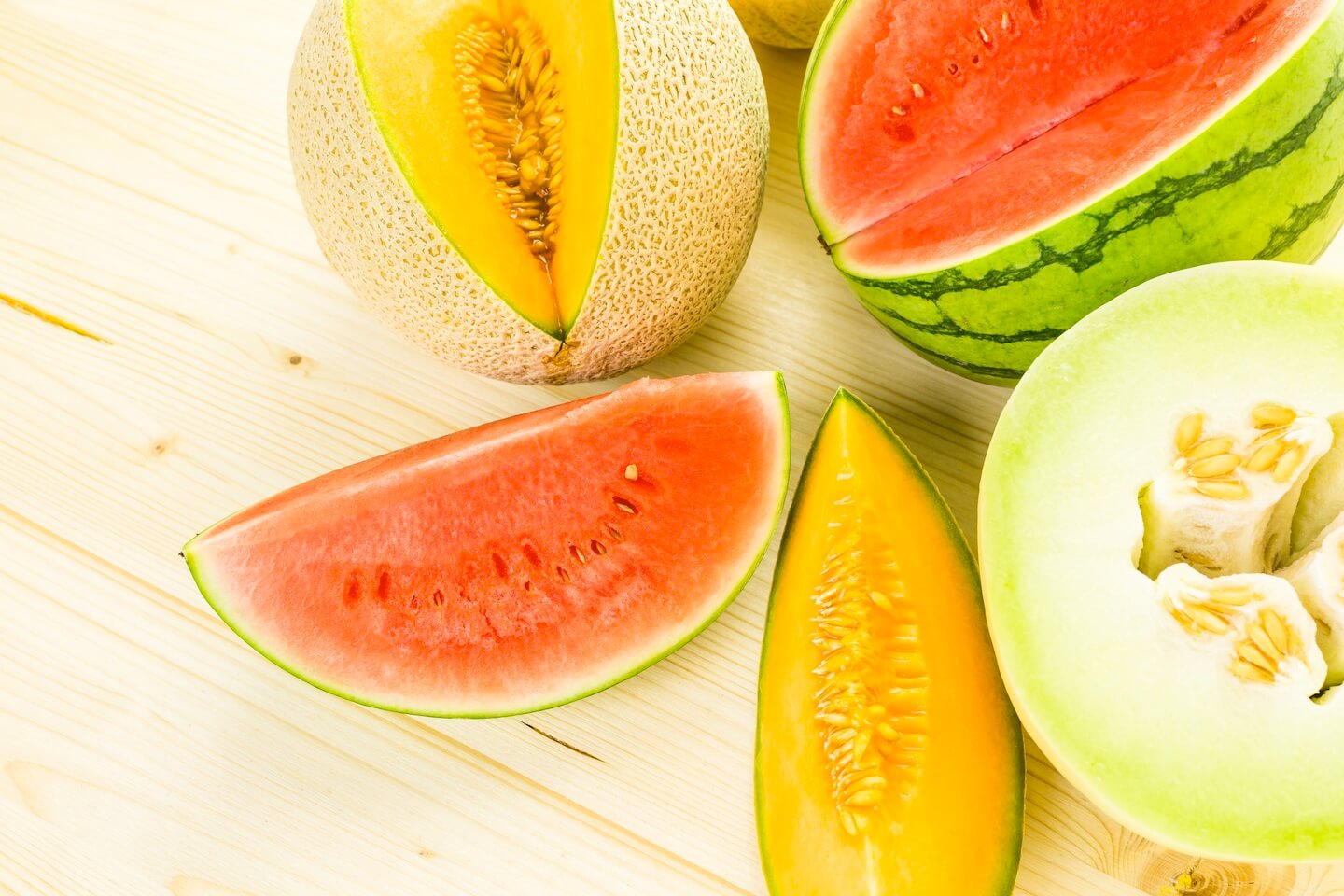
Melon Mania
By Chelsea Fisher
Whether it’s watermelons, cantaloupes, honeydews — how lucky we are that melons of many stripes show up during a long hot summer? Watermelons contain lycopene, the antioxidant touted for it’s anti-prostate cancer benefits. They’re also a great source of vitamins A, C, and potassium. Watermelons can be a good option for those going through treatment because they can be palatable both for those feeling nausea or a sore mouth. It’s made up of mostly water (hence the name) so it will help to keep you hydrated on high temperature days.
Cantaloupes are high in beta-carotene — another extraordinary antioxidant found in red and orange foods. Some studies have found that the beta-carotene content increases as cantaloupes ripen, so they’re at their best if you leave them on the counter for a few days. This orange colored melon is a great source of vitamins A and C both of which are extremely helpful for the immune system and cell damage repair.
Honeydews are a good source of vitamin B6, folate, and potassium. And a one-cup serving of honeydew will supply about half of your vitamin C needs for the day.
Ann’s Tips
All melons should feel heavy for their size, and should be relatively uniform in shape.
To determine if a watermelon is ripe, knock on it a few times. It should sound somewhat hollow on the inside. Look for a white or cream spot on one side. This is the point where it’s been laying on the ground. The creamier looking the spot, the longer the watermelon has been ripening on the vine.
The best way to see if a cantaloupe is ripe is to pick it up and sniff it. Ripe cantaloupe should have a very strong, sweet cantaloupe-y smell. Cantaloupe should not look too green (a sign that it’s under ripe) and neither should it be too soft (a sign that it’s over ripe).
When choosing honeydew, make sure it’s smooth and that there are no soft spots. To see if it’s ripe, gently press the flower end, to see if it gives slightly. If it does, it’s ready to eat. You can also give the melon a shake to hear if the seeds jumble around. This also means it’s ripe.
Recipe Tips
When you are on chemo, because their flesh is hermetically sealed inside their skins, melons are one of the few fruits you can eat raw, with one caveat. You must wash the outer skin thoroughly before you cut into the fruit.
Melons are an obvious addition to fruit salads, but they can also be dressed up a bit for more interesting fare. For something a little exotic try our Watermelon and Feta Salad — you’ll be surprised how delicious it is. Or try our nutritional powerhouse, the Kale & Melon Smoothie, so refreshing to sip on when it’s hot outside.













Reviews & Comments
No reviews yet.
Leave a Review or Comment